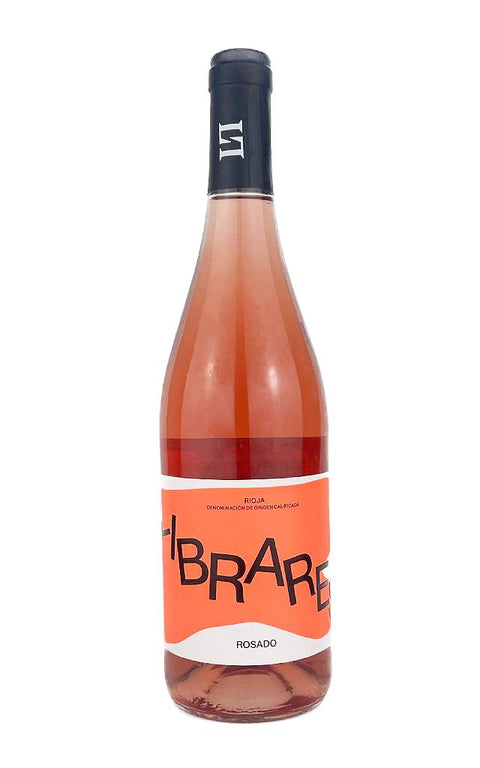
Senorio de Librares Rioja Rosado
ORGANIC / LOW SULPHITE / ROSE WINE / SPANISH WINE
A bright, summery rosé from Rioja Oriental, blending Tempranillo and Garnacha for a wine that’s fresh, fruit-forward, and just structured enough to pair with food. Think of this as a go-to pink for sunny lunches, picnics, or tapas with friends.
- Origin: Rioja, Spain
- Producer: Senorio de Librares
- Vintage: 2024
- Grape variety: 50% Garnacha, 50% Tempranillo
- Food pairing: Rice dishes, Asian food, Pasta, Veg dishes, Fish, Poultry.
- Bottle size: 75cl
- ABV: 13%
Flavour profile
Delicate and lively, with aromas of strawberry, sour cherry, and rosehip, alongside subtle herbal notes like hay and fresh grass. On the palate, this organic rosé is crisp and refreshing with a juicy core of red berries, soft tannins, and a lightly mineral finish. A lovely balance of brightness and texture.
About Señorío de Librares
Señorío de Librares is a family-run estate in Rioja, focused on traditional Spanish grapes and modern, clean expressions. Their rosés are crafted with care and a commitment to sustainable farming and low sulphites, showcasing the lighter, fresher side of Rioja while keeping the region’s character and elegance intact.
About Rioja Rosé
While Rioja is best known for its reds, rosés (rosados) from this region (especially in Rioja Oriental, the warmest subzone) are gaining attention for their bright fruit, floral notes, and elegant structure. They’re often made from Tempranillo and Grenache, offering more depth and a savoury edge compared to many international rosés.
How to pair it
This is a Spanish rose that loves food. Try it with grilled prawns, Spanish tortilla, tapas, or a goat’s cheese salad. It also works with light pasta dishes, veggie paella, or anything with tomatoes and herbs.
Delivery and returns
What are the delivery options?
- Local Delivery (E17, E10 postcodes): Free over £35
- Click & Collect: Free
- Standard Delivery: £8.95 (Free over £80)
Where can I get my order delivered?
- Local Delivery is available within London E17 and E10 postcodes.
- Click & Collect orders can be picked up at our shop located at 149 Forest Rd, E17 6HE.
When will my order arrive?
- Next day service is available for local and standard deliveries (subject to availability).
- All orders placed by midnight will be dispatched the next working day.
Why do I need to pay for returns?
- If returning your order by mail, the buyer is responsible for the return shipping cost.
- You may return your purchase within 30 days if you are unsatisfied for any reason.
How do I return my order?
- Free returns are available if you return your order to our store.
- If returning by mail, you may ship back the item using the carrier of your choice.
Frequently Asked Questions
Is Rioja a rosé?
Not exactly. Rioja is a region in Spain, not a type of wine per se. While it’s best known for its red wines, the region also produces white (blanco) and rosé (rosado) wines. So when you see a “Rioja Rosé,” it means a rosé wine made in the Rioja region, often using grapes like Tempranillo and Garnacha.
What kind of wine is a Rioja?
Rioja is a Spanish wine region known for dry red wines, mainly from Tempranillo, with styles ranging from fruity and fresh to rich and oak-aged. The region’s diverse climate and soils, from the cool, high-altitude Rioja Alta to the warmer Rioja Oriental, give Rioja wines their balance, structure, and ageing potential.
What region is Rioja wine from?
Rioja wine comes from the Rioja region in northern Spain, which is divided into three subregions: Rioja Alta, Rioja Alavesa, and Rioja Oriental (formerly Rioja Baja). Each has its own microclimate and personality, but all are known for producing high-quality, food-friendly wines, especially from Tempranillo grapes.
Why are sulphites added to wine?
Sulphites (or sulfites) are added to most wines to help preserve freshness, prevent spoilage, and protect against oxidation. They’ve been used in winemaking for centuries. While natural wines sometimes use little or no added sulphites, most wines (even organic ones) contain small amounts. For most people, they’re completely harmless, though a small number may be sensitive to them.
Is Tempranillo dry or sweet?
Tempranillo is a dry red grape variety. It’s known for making medium- to full-bodied wines with flavours of red berries, plum, tobacco, and spice. Even when it's used in rosé, like in Rioja Rosé, the result is typically a dry, crisp wine, not sweet. If you're after a fruit-forward wine that isn't sugary, Tempranillo is a solid choice.